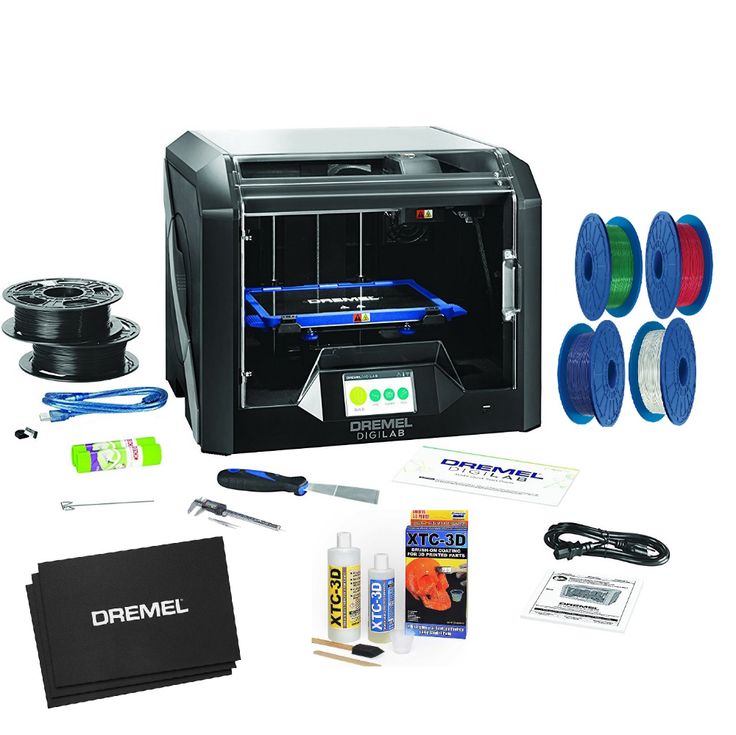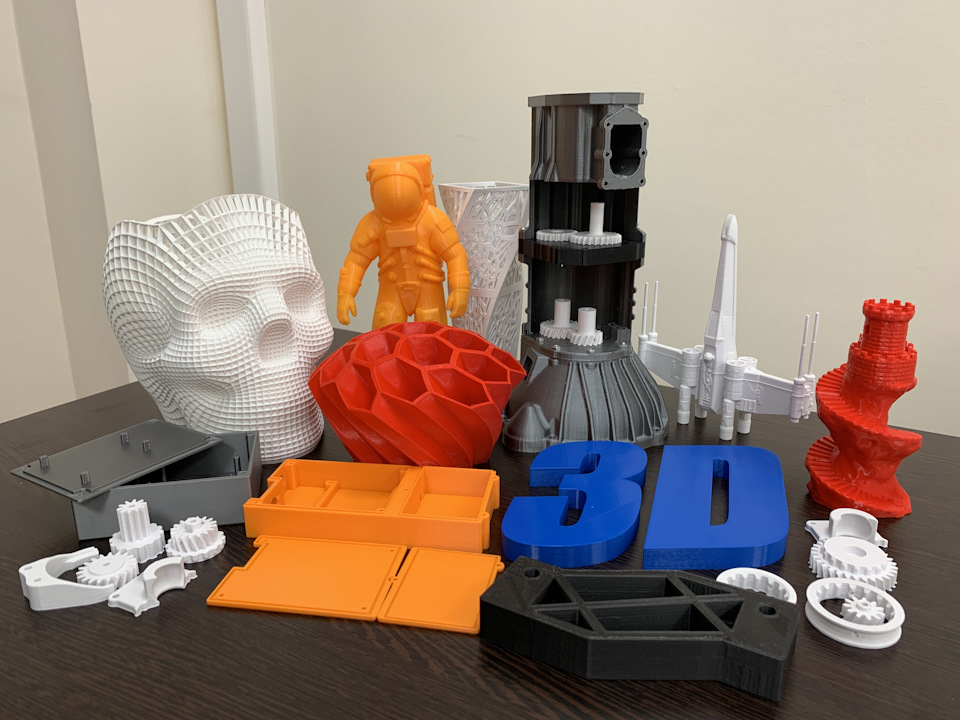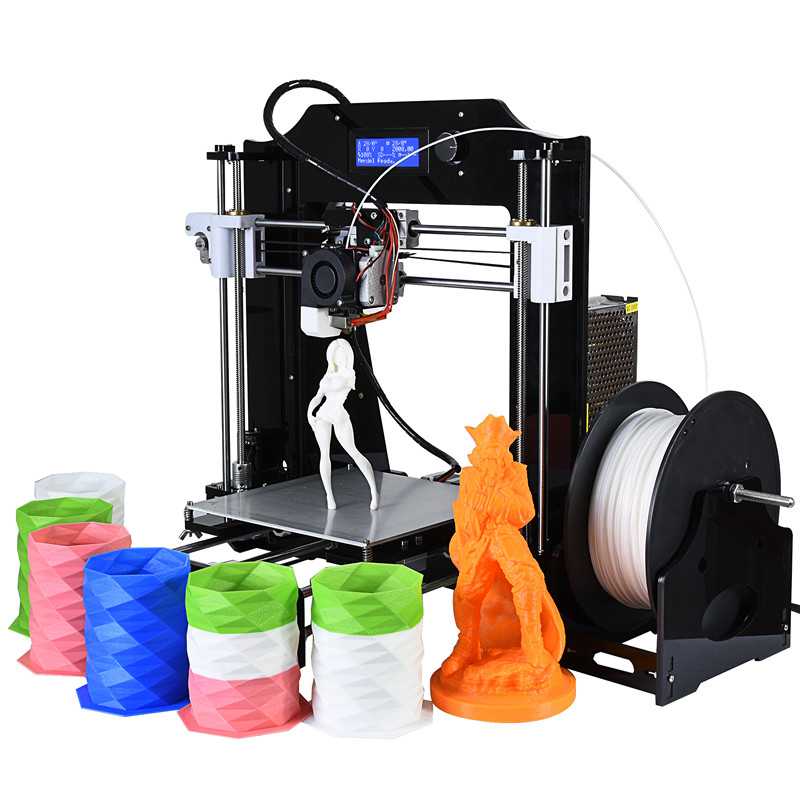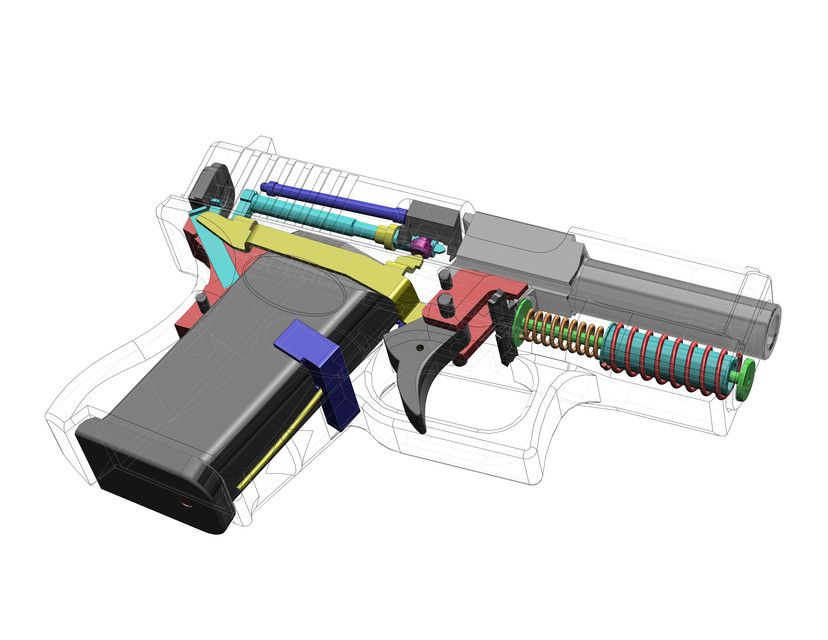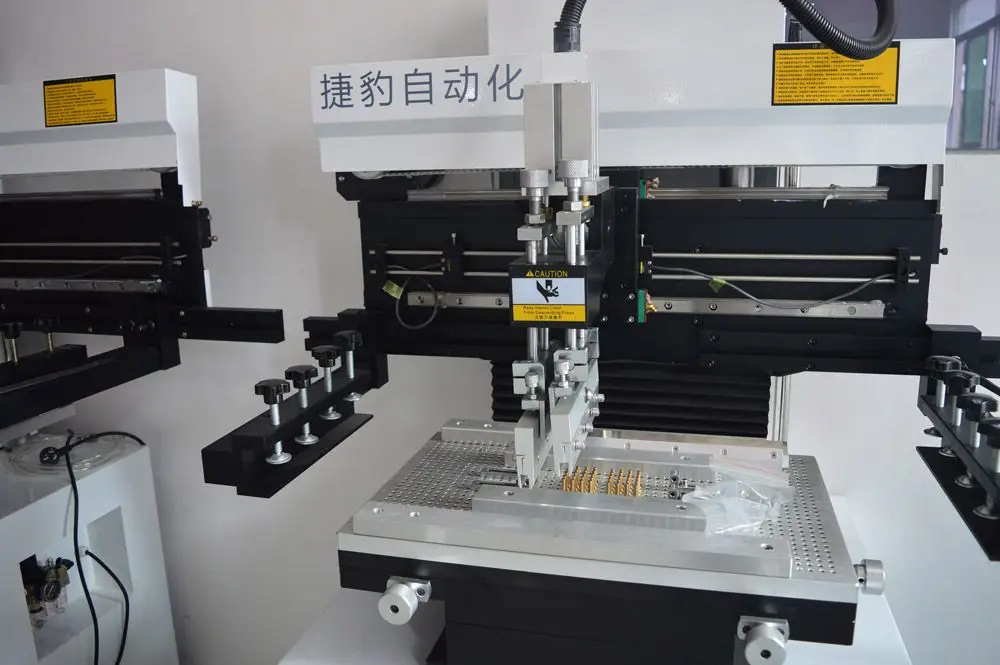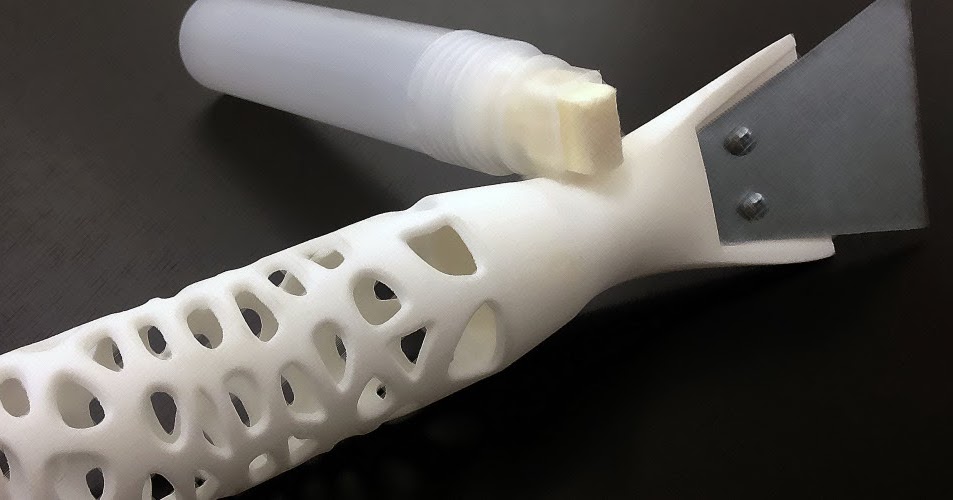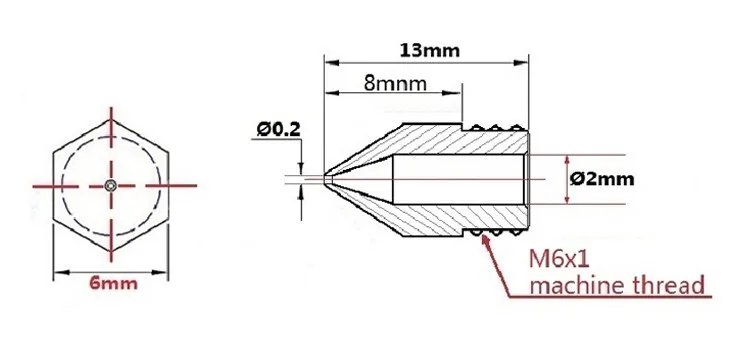Dremmel 3d printer
Dremel 3D Printers: A Closer Look at their Offerings
Published on July 6, 2021 by Madeleine P.
In 2014, Dremel Manufacturing Company moved into 3D printing market with their offshoot, Dremel DigiLab. In line with their focus to shape the new generation of pioneers, their motivation, according to the website, centers around using their products and machines to inspire, enable and equip the future generation of innovators. As such, they put an emphasis on using 3D printing for educational purposes, especially in classrooms. Currently, they have three FDM printers that are available, the 3D45, 3D40 (also available in the 3D40 Flex version) and 3D20. In line with their motivations, they also offer an Edu Bundle which includes training along with a classroom safe printer. Dremel 3D printers are considered some of the most popular 3D printers currently available on Amazon thanks to their affordable prices and known reliability, with customers raving about their products. To learn more, we outline the current Dremel 3D printers as well as their popular Edu Bundle.
Dremel 3D Printers:
3D45
One of the top 3D printers sold on Amazon, the 3D45 is Dremel’s newest machine. With a starting price of $1899, it’s more expensive than Dremel’s other offerings but it’s also one of the most popular for its ease of use and the quality of the product. The printer is compatible with four types of filament: Nylon, PETG, Eco-ABS, and PLA, more than any of Dremel 3D printers. The printer size is 20.3 x 16 x 15.9in (645 x 406 x 404mm) with a build volume of 10 x 6 x 6.7in. Like all of Dremel’s products, the printers boasts safety features like a fully enclosed build chamber and active carbon filter to protect users from harm, allowing it to be certifiably safe for classroom use. Additionally, it has high resolution, printing at a 50-Micron Resolution. Dremel highlights the extensive testing it has undergone, calling it the most reliable 3D printer on the market.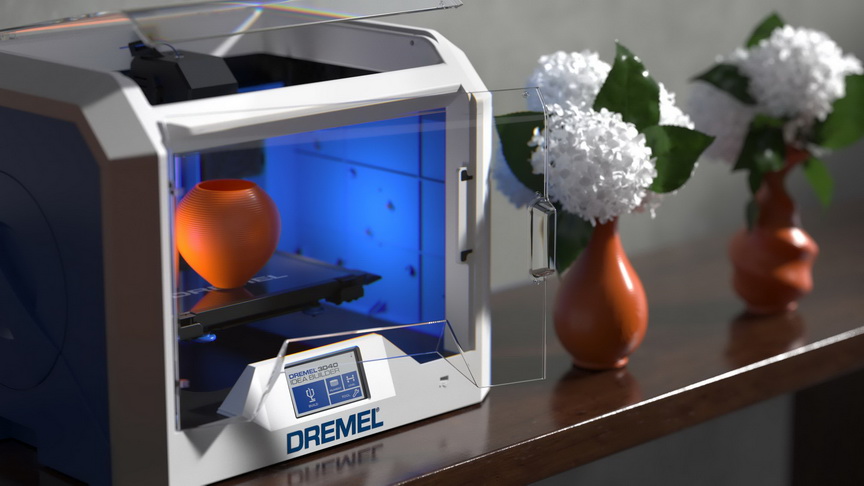
One of Dremel’s most popular offerings, the 3D45 (photo credits: Dremel)
3D40
The 3D40 is available in two forms, the original 3D40 and the 3D40 Flex which Dremel claims is 30% faster than the original version. The 3D40 is available from $1,299 while the 3D40 Flex starts at $1,399, making the machines mid-range for Dremel. Like the 3D20, they are only compatible with PLA, though they have a slightly larger build volume than the 3D45 and 3D20, with the 3D40 having a build volume of 10 x 6 x 6.7in and the 3D40 Flex being even bigger, with a build volume of 11 x 6 x 6.7in (255 x 155 x 170mm). The printers are UL Certified, meaning they acquire to certain safety standards, making them safe for use at home or anywhere else.
The Dremel 3D40 Printer (photo credits: Dremel)
3D20
Dremel’s cheapest 3D printer, the 3D20 starts at just $679. Like all Dremel 3D printers, the 3D20 has an enclosed build chamber for user safety and is quiet when running. Users can use PLA with this machine and can expect high quality prints with a resolution of 100 microns, impressive for the price. The printer is compact with a printer size of just 15.7 x 19.1 x 13.2 in (399 x 485 x 335mm) and a build volume of 5.5 x 9 x 5.5 inches (140 x 229 x 140mm), along a weight of just 19.8lbs (9kg). Its extruder has a temperature of 446 ℉ (230℃). All in all, an effective and powerful machine that won’t break the bank.
The printer is compact with a printer size of just 15.7 x 19.1 x 13.2 in (399 x 485 x 335mm) and a build volume of 5.5 x 9 x 5.5 inches (140 x 229 x 140mm), along a weight of just 19.8lbs (9kg). Its extruder has a temperature of 446 ℉ (230℃). All in all, an effective and powerful machine that won’t break the bank.
Dremel 3D20 (photo credits: Dremel)
Edu Bundle
What’s especially interesting about Dremel is its focus on education. With the Edu Bundle, you will receive a 3D printer (certified safe for classroom use), four spools of Dremel Filament (2 advanced and 2 PLA), 2 3D45 Build Plates, 4 Build Plate Glue Sticks, 30 Standard-Based Lesson Plans, a 4-hour 3D Printing Professional Development Course, and a 4 Hour ISTE PD Certificate (with a limit of one certificate per bundle). The goal of the bundle is to allow teachers to integrate 3D printers and lessons related to them into their curriculum, training the next generation of engineers in this increasingly important technology.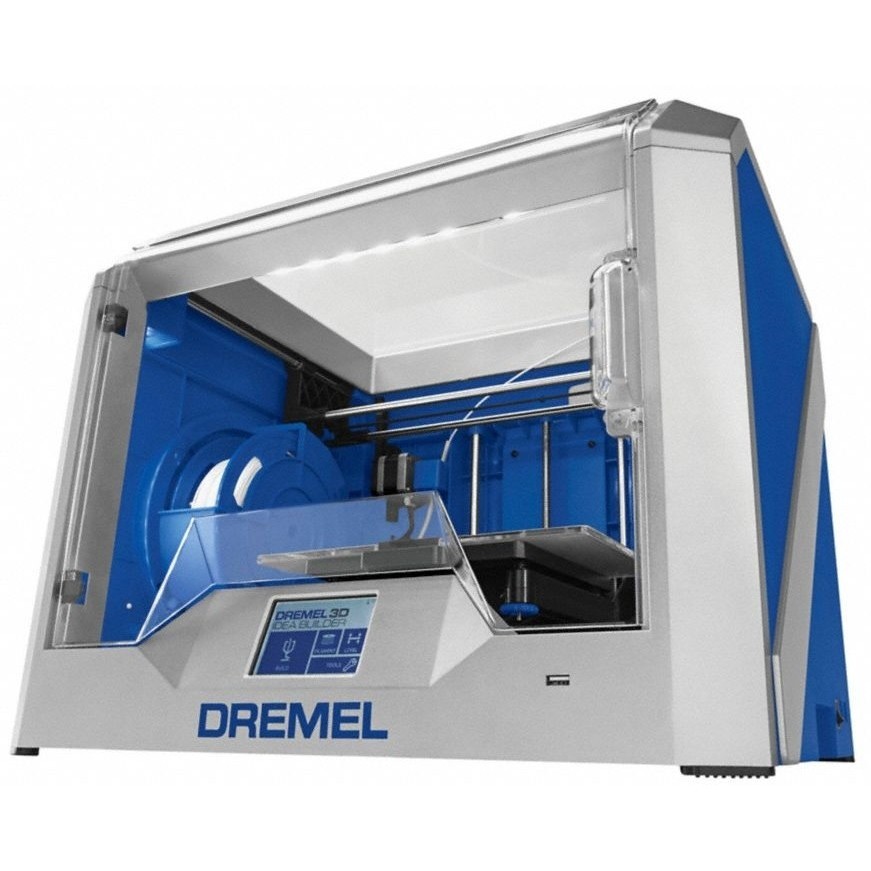 It not only will train the user, but also gives them possible lesson plans that can be used in the classroom, helping to inspire students. The kit can be bought with either a 3D45 or 3D40 Flex printer. You can buy it from a number of sellers, including article, with prices starting at $2099.
It not only will train the user, but also gives them possible lesson plans that can be used in the classroom, helping to inspire students. The kit can be bought with either a 3D45 or 3D40 Flex printer. You can buy it from a number of sellers, including article, with prices starting at $2099.
What you would receive with the Dremel Edu Bundle (photo credits: Dremel)
For more information on these machines or the other products available, you can visit Dremel’s website HERE. What do you think about Dremel’s offerings? Let us know in a comment below or on our Facebook, Twitter and LinkedIn pages! Sign up for our free weekly Newsletter here, the latest 3D printing news straight to your inbox!
Thumbnail photo credits: Dremel
REVIEW: The Dremel 3D45 a professional, versatile and reliable open material 3D printer
With an 80, almost 90, year legacy to uphold, 3D printers from Dremel are designed to be reliable and robust machines. Sold under the Digilab brand, Dremel’s range of products are suitable for helping people to get started with 3D printing and take more advanced steps with the technology. The Dremel 3D45 is in the latter bracket of the company’s 3D printers. It has an all metal-hot end direct drive extruder (capable heating up to 280°C) and heated glass bed, offering a build volume of 254 x 152 x 170 mm.
The Dremel 3D45 is in the latter bracket of the company’s 3D printers. It has an all metal-hot end direct drive extruder (capable heating up to 280°C) and heated glass bed, offering a build volume of 254 x 152 x 170 mm.
The 3D Printing Industry engineering team has been working with the Dremel 3D45 over the course of one month. In this time, the machine has been intensively tested to prove several core claims:
– The ability to produce high quality 3D prints
– High compatibility with a range of different, and third-party, filaments
– Provision of good bed adhesion
– Versatility
– Safety and reliability
– Very easy to use
– Suitable for use in education
This review summarizes the discoveries of the team, reaching comprehensive conclusions about the construction, utility and quality of Dremel 3D45.
The Dremel DigiLab 3D45 printer. Photo via Dremel.Dremel 3D45 hardware and slicer detail
The Dremel 3D45 is an FFF 3D printer with a full, enclosed, plastic chassis. It operates a cartesian axis system, known to be more rigid and accurate than a delta or polar configuration. The printhead moves on the X and Y axis whereas the bed descends on the Z axis, maintaining accuracy and speed.
It operates a cartesian axis system, known to be more rigid and accurate than a delta or polar configuration. The printhead moves on the X and Y axis whereas the bed descends on the Z axis, maintaining accuracy and speed.
The printhead used in the 3D45 is a direct extrusion system with the motor feeding the filament mounted directly on it. This makes filament loading easy, contributing to the system’s core claim of being “very easy to use.” It also makes the printhead heavier than other configurations, leading to potentially lower accuracy and productivity when compared to, for example, a bowden setup. Though it may increase productivity and speed, choosing a bowden setup and moving the motor out of the print head however would sacrifice the 3D45’s compatibility with flexible filaments.
Semi-automatic leveling facilitates the setup of the 3D45. A touchscreen enables calibration. Another added feature is the use of an RFID sensor. With this installed, RFID chips on spools of Dremel filament are read by the 3D printer to automatically create appropriate print settings.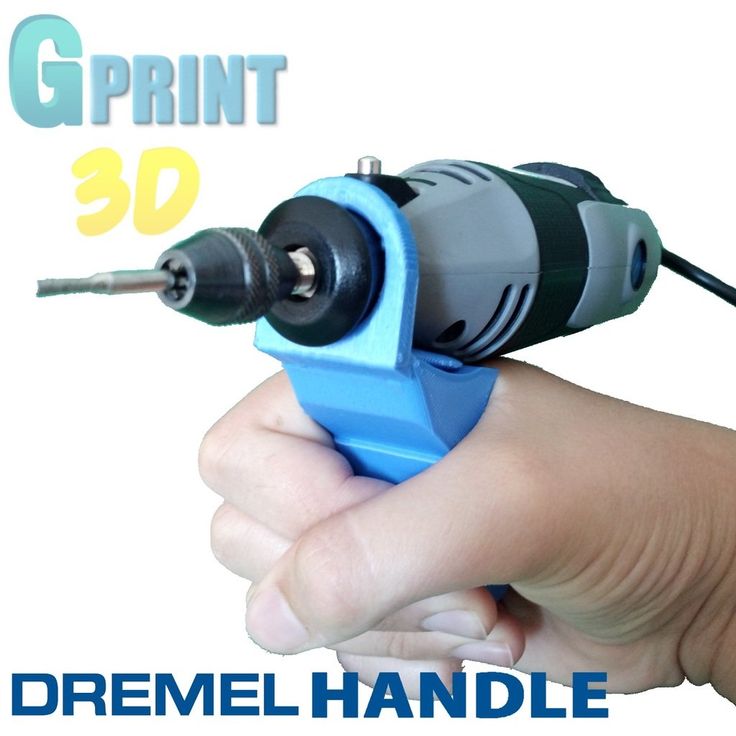 The 3D45 is of course an open materials system, but this feature is a nice touch for user-friendliness when working with own brand materials.
The 3D45 is of course an open materials system, but this feature is a nice touch for user-friendliness when working with own brand materials.
The print bed on the Dremel 3D45 is made to work with more challenging materials. It comes in two parts, first the heated bed, and second a removable glass plate. The heated bed can be raised up to a temperature of 100°C, vital to prevent warping of 3D prints. The removable glass plate, on the other hand, is a convenient addition when removing finished parts. Printing onto this plate also creates smoother first layers on objects.
Warping and delamination is further avoided through the 3D45’s closed-atmosphere build chamber. Though not very aesthetically pleasing, the plastic case helps to ensure the safety of the Dremel 3D45 too, making it suitable for use in an educational setting.
Dremel Digilab slicing software is used to prepare objects for the 3D45. Based on the award winning Cura software from Ultimaker, the Digilab slicer has a very familiar and intuitive interface.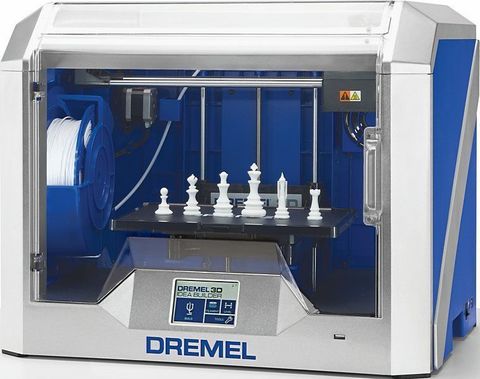
Both recommended and custom settings can be used depending on the experience of the operator. Contributing to claims of “good bed adhesion” the Digilab sliced used for 3D45 and other Dremel 3D printers makes it possible to see a preview of the print with supports and bed adhesion by clicking on “layer view.” One of the only downsides to Dremel Digilab slicer is that it does not have all of the plugins available to the original Cura software. It would be great to see some of these (such as Custom supports, Catia, SOLIDWORKS and mesh tools) integrated at a later date.
Dremel Digilab Slicer advanced settings categories.3D printer set up in less than 10 minutes
On average, it took the team just two minutes to load filament into the Dremel 3D45. With semi-automatic bed leveling, calibration took no longer than five minutes. Before each print begins the system also checks bed leveling to avoid error. Connecting to wi-fi was also easy to achieve, taking a further two minutes.
Before each print begins the system also checks bed leveling to avoid error. Connecting to wi-fi was also easy to achieve, taking a further two minutes.
Though it took less than 10 minutes to get the 3D45 fully setup and ready to print, the engineering team did note a few areas for consideration in potential developments of the machine.
First of all, the 3D45’s integrated spool holder is too small for many of the third party filaments we loaded into the machine. Though it doesn’t stop the 3D45 from 3D printing, it does mean that materials have to be kept externally with the front door of the system open, compromising a controlled build temperature. To improve bed leveling before each print too, this process could be done when both bed and nozzle are completely hot in order to reduce the margin for potential error.
High quality 3D printing
In total, approximately 20 different 3D printing tests were performed on this printer, many conducted a number of times to either prove repeatability or fine-tune settings for the optimal result. The first six basic tests are listed in the table below.
The first six basic tests are listed in the table below.
| Object | Purpose | Profile | Layer thickness | Infill | Material | Outer wall print speed | Print Speed |
| 3D Benchy | Standard Test | High-quality | 0.1 | 30% | Eco-ABS | – | – |
| Square with Hole | Repeatability | High-quality | 0.1 | 30% | Eco-ABS | – | – |
| Hexagons | Repeatability | High-quality | 0.1 | 30% | Eco-ABS | – | – |
| Overhang Model | Overhang Test | Custom | 0.1 | 30% | Eco-ABS | 15mm/s | 60mm/s |
| Nut and Screw | Small part precision | High-quality | 0.1 | 30% | Eco-ABS | – | – |
As a standard print used by many people when trying a machine for the first, the 3D Benchy is always a good place to start test printing. In general, the quality of this first print was very good. No stringing occurred across the cavities/windows in the object, the roof was well printed and layers were barely visible. To verify the quality of the 3D print, the team also took measurements of the model 3D Benchy, to compare it to its digital equivalent.
| Bridge roof length | Chimney ext | Chimney int | Horizontal width | Total height | |
| Reference (mm) | 23 | 7 | 3 | 31 | 48 |
| Dimension (mm) | 22.94 | 6.91 | 2.84 | 30.98 | 47.82 |
| Difference (mm) | 0.06 | 0.09 | 0.16 | 0.02 | 0.18 |
The mean of the differences between physical measurements and reference measurements is under 0.1mm at 0.089 mm. From this preliminary test we can therefore verify that the Dremel 3D45 can be deemed an accurate printer.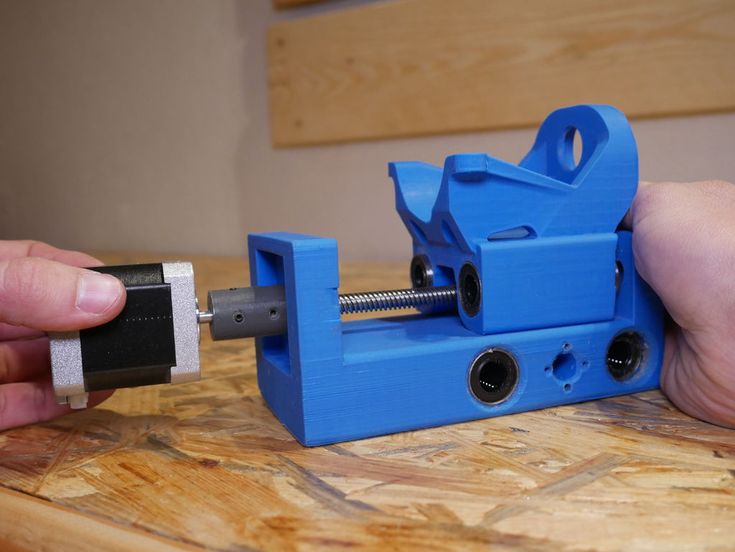
One single 3D print however is not enough to prove overall accuracy. Repeatability is much more crucial to the integrity of the machine. To test this, the team conducted several experiments. Each test print in this trial contained five models of the same object.
Repeatability testing of a Square and Hole model on the Dremel Digilab 3D45The models were 3D printed in a single build and repeated four times more to create an ample dataset. An example can be seen in the chart below for the “Square with Hole” model.
| Hole φ | Height | Width | Length | |
| Reference | 12 | 10 | 15 | 15 |
| Print 1 | 11.94 | 9.89 | 14.96 | 15.06 |
| Print 2 | 11.91 | 9.89 | 14.95 | 15.03 |
| Print 3 | 11.97 | 9.85 | 14.93 | 15.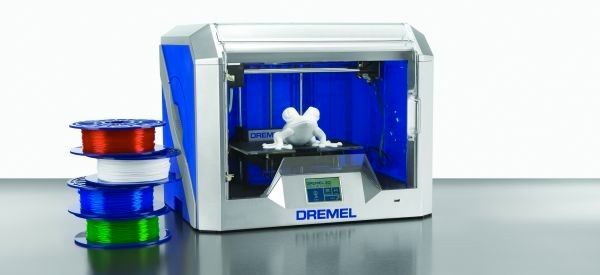 06 06 |
| Print 4 | 11.91 | 9.94 | 14.93 | 15.06 |
| Print 5 | 11.91 | 9.88 | 14.92 | 14.96 |
The mean difference for each of the repeatability experiments is low, with standard deviation up to 0.04 in the Square with Hole models or 0.01 in the case of the Hexagons.
Repeatability test HexagonsNormal distribution on the width of test Hexagons.
As some dimensions fall remarkably short of the target reference measurement, we can conclude that the printer is precise but, as yet, it is not fully accurate. Still, the difference in the end parts is neglibile and deviation doesn’t undermine functionality.
In a further precision test, the team used a 28mm long screw with a small nut, requiring high tolerances for assembly.
In this model, the screw’s thread quality was excellent, requiring no effort when adding the nut.
Small part test on the Dremel Digilab 3D45.To test overhangs, the team used this model to determine the maximum 3D printable angle without adding supports . The overhang test model is composed of 6 walls varying in overhang angle from 40° in 5° increments up to 65°.
Moving well outside the 45° “rule” of design for 3D printing, this test artifact showed remarkable results. The 65° wall was 3D printed without any major default. Layers are marked and the object is slightly bent – but this is a normal phenomenon due to the overhang configuration.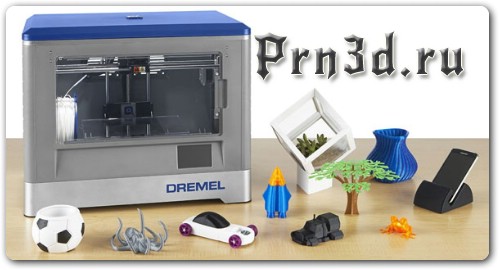
Challenging material tests
All of the basic 3D printing tests performed on the Dremel 3D45 were done using the company’s own RFID-identified Eco-ABS filament. To fully understand how the machine works when using more challenging, third party materials, a further set of tests were conducted by 3D Printing Industry engineers. These tests take into account the machine’s ability to 3D print using Nylon, TPU, third party ABS and PC.
| Object | Material Tested | Profile | Layer thickness | Infill | Print Speed | Fan Speed |
| Phone Case | Nylon | Draft | 0.2 | 30% | – | – |
| Combustion Engine | Nylon | Draft | 0.2 | 30% | – | – |
| Phone Case | Third Party TPU | Custom | 0.1 | 30% | 40mm/s | – |
| Humerus Model | Third Party ABS | High-quality | 0.1 | 30% | – | – |
| Fortress | Third Party PC | Custom | 0.2 | 30% | 20% |
For Nylon, two test models were tried on the 3D45. After three tries, each time changing bed adhesive, the team managed to produce a phone case in this challenging material without any warping at the corners.
From top to bottom: first, second and third test prints of a Nylon phone case.The second Nylon test model was a miniature replica of a combustion engine – for educational purposes. In this 3D print only two minor defects occurred due to the glue applied on the print bed (rather than printer error). Stringing, a common side-effect of 3D printed nylon also occurred, though this was no cause for concern. The model was functional after 3D printing.
Second Nylon test – functional combustion engine model for educational use.
A different phone case design was chosen as the test for third party TPU. At a print speed of 40 mm/s, a practically flawless model was produced.
Phone case made to test third party TPU on the Dremel Digilab 3D453D printing with Polymaker PC filament required the spool to be located outside of the 3D printer with the door open. Despite this challenge, the 3D45 handled the 15 – 20 hour Fortress well. The cool air flow from outside the 3D printed caused some delamination issues in the shrink-prone PC material. However, the quality of the part is still of a prototype standard.
Test print of a PC Fortress showing delamination in layers of the print.
Any warping issues with material were also put to the test in a 3D print of a bone model which, due to is organic shape, has very little contact with the print bed. In fact, in the first two attempts at this print, the bone detached from the bed (again without error from the 3D printer).
On the third try, the team successfully 3D printed the bone using a third party ABS.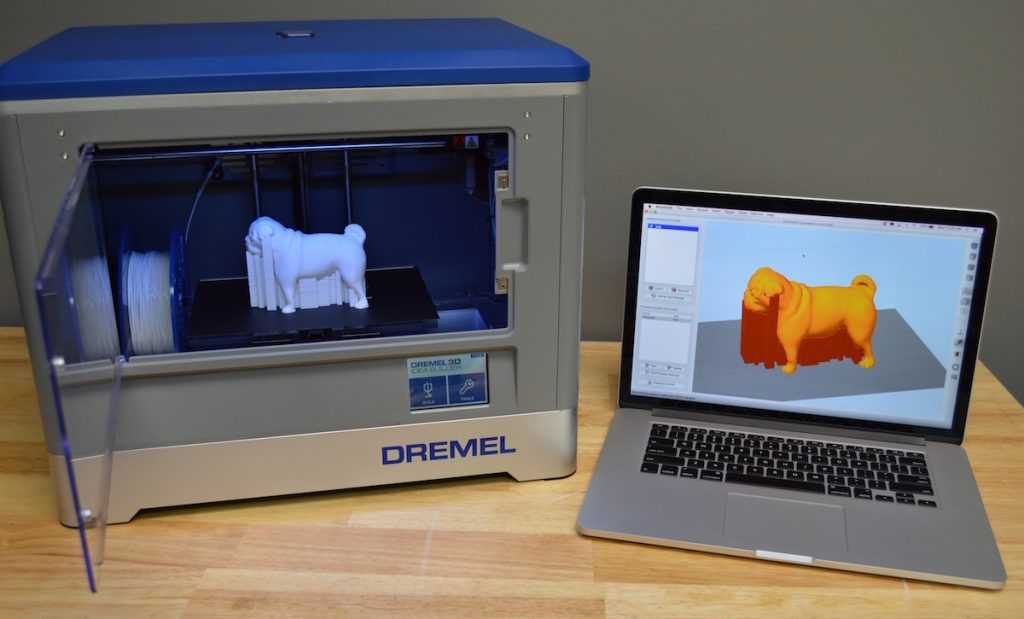 comparable to Dremel’s Eco-ABS. The raft used in this test experienced no warping, and overall surface quality was very fine.
comparable to Dremel’s Eco-ABS. The raft used in this test experienced no warping, and overall surface quality was very fine.
The 3D45 – a machine deserving of Dremel’s legacy
Living up to the Dremel legacy, the 3D45 is a reliable 3D printer. Throughout the rigorous testing of the 3D Printing Industry team, the machine itself didn’t experience a single failure and we never had to stop it before 3D printing was completed. Both large and small 3D printed objects made on the system are of an undeniable high quality, and the machine has no issue with builds that last in excess of 15 hours.
Though often inconvenient to load third party filament spools, the 3D printer expertly handled the processing of a range of challenging materials, including Nylon, TPU and PC. In this respect, it is much more advanced than your average desktop PLA 3D printer. With more challenging materials, we often needed to conduct a few test prints before getting the best properties.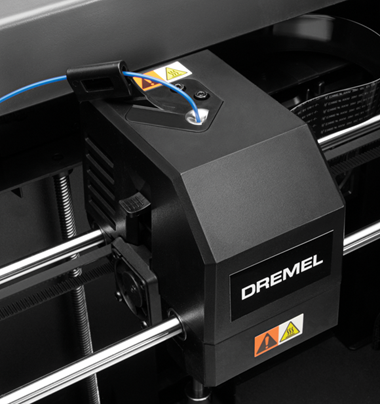 Any lack of adhesion caused was typically due to the design, and required some experimentation with other adhesives to succeed. The optionally heated glass bed was a great addition to the quality of first layers, as well as adhesion. The ability to remove the plate post-printing also made object removal relatively simple.
Any lack of adhesion caused was typically due to the design, and required some experimentation with other adhesives to succeed. The optionally heated glass bed was a great addition to the quality of first layers, as well as adhesion. The ability to remove the plate post-printing also made object removal relatively simple.
A number of features fulfil the promise of the 3D45’s user-friendliness. Direct extrusion makes filaments (of the right size) easy to load. RFID chips on proprietary materials automatically set print profiles, and the 3D printer was very quick to set up. Through similarities with Cura, Dremel Digilab has an intuitive and familiar interface, though it could be improved by further plugins. Other features, such as wifi connectivity, semi-automatic bed leveling, and touchscreen operation also give the machine points for utility. This rating, combined with the machine’s fully enclosed print bed and option to buy as part of an education package, make the 3D45 perfect for an academic setting.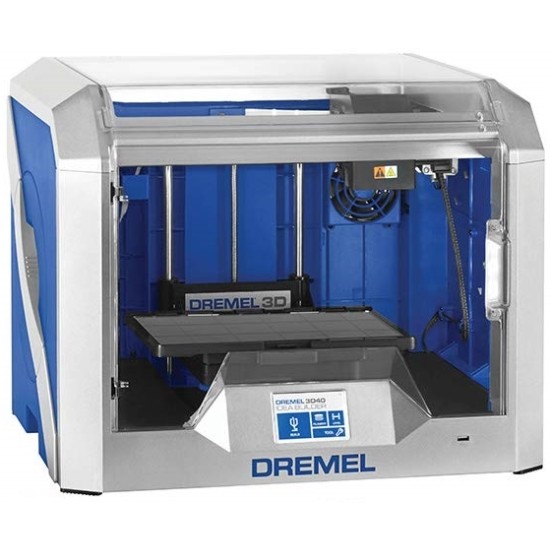
For the duration of 3D Printing Industry’s test period, the 3D45 was very reliable, producing multiple parts with very little deviation in size. We also proved that the machine can be used for a variety of different purposes, from functional prototyping and modelmaking, to the production of educational tools.
Though it would be nice to see some aesthetic improvements to the casing, especially considered its price tag, the Dremel 3D45 is a very versatile 3D printer, capable of producing models of a high quality. It could very well be your next workhorse 3D printer.
For in-depth reviews and other news from 3D Printing Industry subscribe to our newsletter, follow us on Twitter, and like us on Facebook. Find talent for a project, or advance your career in 3D printing – join 3D Printing Jobs to apply and advertise.
Find out who you voted to be your desktop 3D printer of the year in the 2019 3D Printing Industry Awards.
Featured image shows the Dremel DigiLab 3D45 printer.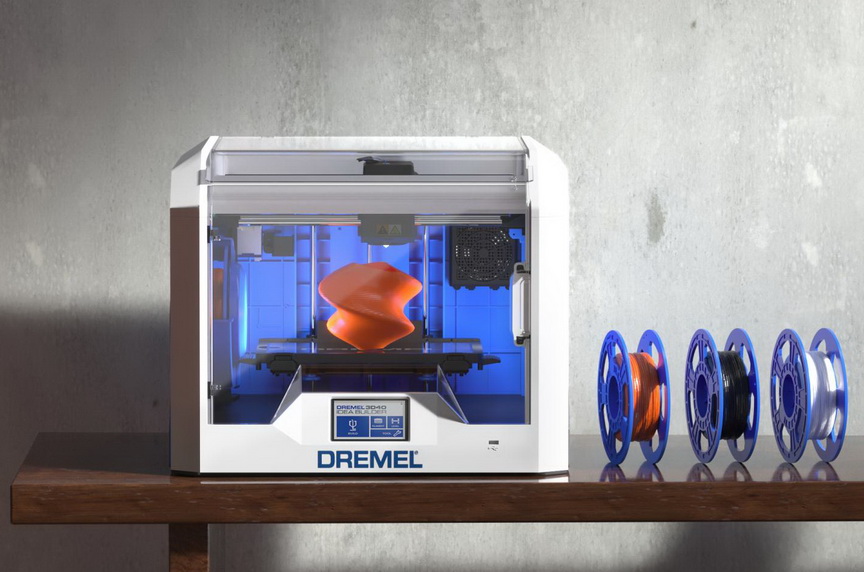 Photo via Dremel.
Photo via Dremel.
Dremel 3D45 3D printer in Moscow
Out of stock
Add to compare
Item added to compare Go
10% discount on materials Free shipping within Russia
nine0002 258 000 ₽Notify me of admission
Official distributor
We work directly with manufacturers.
Any form of payment
The opportunity to see the 3D printer in action in our demo room. nine0003
Own warranty service
Warranty and post-warranty service for equipment purchased from us.
Permanent 10% discount on consumables
When you buy a 3D printer from us,
you get a 10% discount on all consumables.
The Dremel 3D45 is an easy to use and reliable 3D printer awarded by PCMag. 3D45 Reliability Confirmed by UL Safety Certification: US-29813-M1-UL and thousands of hours of testing, bumps and drops, it can rightly be called one of the most reliable 3D printers on the market.
The Dremel 3D45 offers quality printing with a layer resolution of 50 microns. The closed chamber, heated bed, and clog-resistant direct-drive all-metal extruder deliver high quality prints on flexible, decorative and thermoplastics.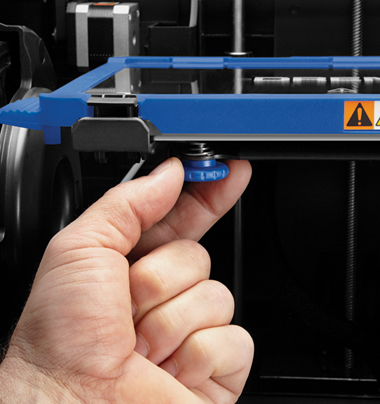
Software 9The 0032 Dremel Idea Builder and the Dremel Print Cloud offer a complete solution to streamline your workflow.
This solution makes it easy to manage one or more Dremel printers and offers many useful features: upload STL files, place models on the build platform, split print jobs, queue multiple jobs for any printer and track jobs, prepare models for printing, manage settings and task scheduling. The Dremel Print Cloud toolbar provides access to job history and statistics. nine0003
The built-in HD camera makes it easy to monitor the printing process wherever you are. Live streaming can be viewed using the Dremel Print Cloud from a PC or mobile device with Wi-Fi or Ethernet access.
All functions required for printer and job management are also available on the 4.5 inch high resolution color touch display.
Dremel branded heads support RFID so the printer can automatically detect the type of media being used.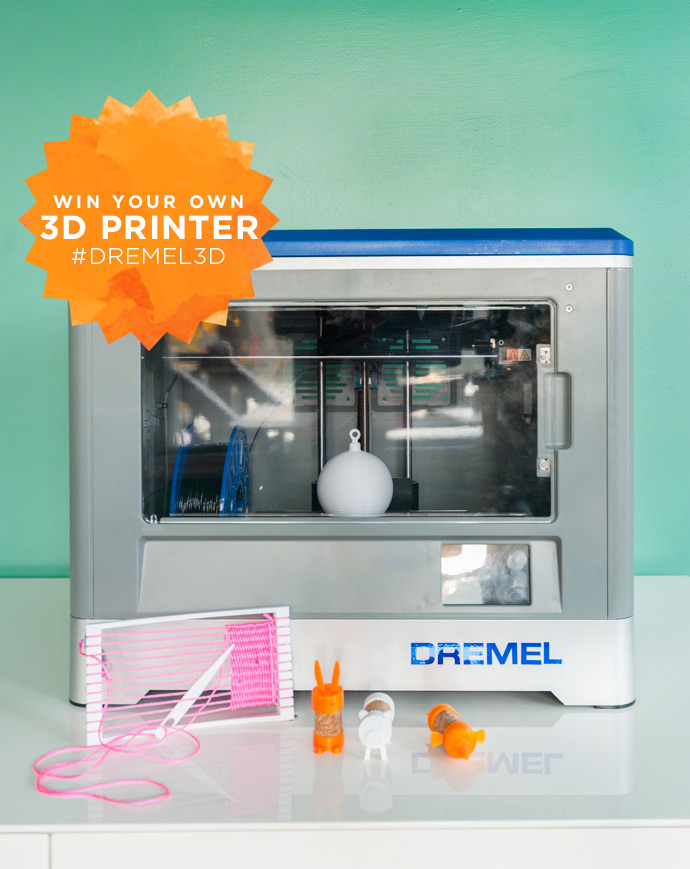 The printer also keeps track of how much media is left on the spool. The extruder has a built-in filament end sensor that will detect when material is running out and automatically pause the job until new filament is loaded.
The printer also keeps track of how much media is left on the spool. The extruder has a built-in filament end sensor that will detect when material is running out and automatically pause the job until new filament is loaded.
To make it easier to work with the printer, 3D45 offers the optional Calibration Sensors which will detect the position of the platform and the printer will tell you how to adjust the level. nine0003
Integrated charcoal filter protects the air from harmful VOCs.
Scale of delivery
Delivery to all regions of Russia and countries of the Customs Union.
Free shipping
When you buy a 3D printer (except assembly kits) you get free shipping.
Cash
In our store you can pay for your order in cash.
Online payment on site
You can pay for orders with a bank card on the website of our online store.
Best 3D Printing STL Files Dremel・Cults
dremel box
Free
Dremel Tool Organizer
Free
Mini Drill Press, Dremel Press Adapter
Free
nine0095 Dremel Skadis BracketFree
Parametric Dremel Mount Grip
Free
Hanger for spools of thread (parametric)
Free
Dremel Flex Shaft Handle Nut
Free
AXA Large Dremel Mount
Free
Dremel tool holders and cutters
Free
DREMEL LITE HOLDER
0. 63 €
63 €
Adapter for Dremel 575 with main thread
Free
tool holder for dremel
€12.66 -66% 4.30€
Timbertech Paint Mixer
Free
Versatip Stand Insert for Original Dremel Case
Free
Soporte CNC Mototool TITAN
Free
Base for dremel3000
0,97 €
nine0095 Universal filament filterFree
dremel bench
2.64 €
Mini PCB drill press - M8 rod version
Free
My Dremel Organizer
Free
Dremel 3000 CNC Mount
Free
dremel drywall nozzle
Free
Protector dremel 3000
0,50 €
Clip-on cordless dremel mount
Free
Dremel Modular Tool Stand
Free
nine0095 Small dremel tool holderFree
Dremel Angle Adjustable Table Saw
Free
3D Printing CNC DIY - Dremel CNC Remix
Free
Dremel Mount for Bear Upgrade / Prusa MK3
Free
nine0095 Dremel Small CNC PCB MountFree
Dremel Ball Sander
Free
Dremel depth gauge
2 €
Dremel Chainsaw Manual
Free
Dremel Holder
Free
Dust collector for CNC Dremel "CLIP ON
Free
Magnetic vice
1 €
PROXXON IBS/E Precision handle
Free
Dremel cut-off wheels with spark arresters
4,99 €
Boquilla Dremel 2.
